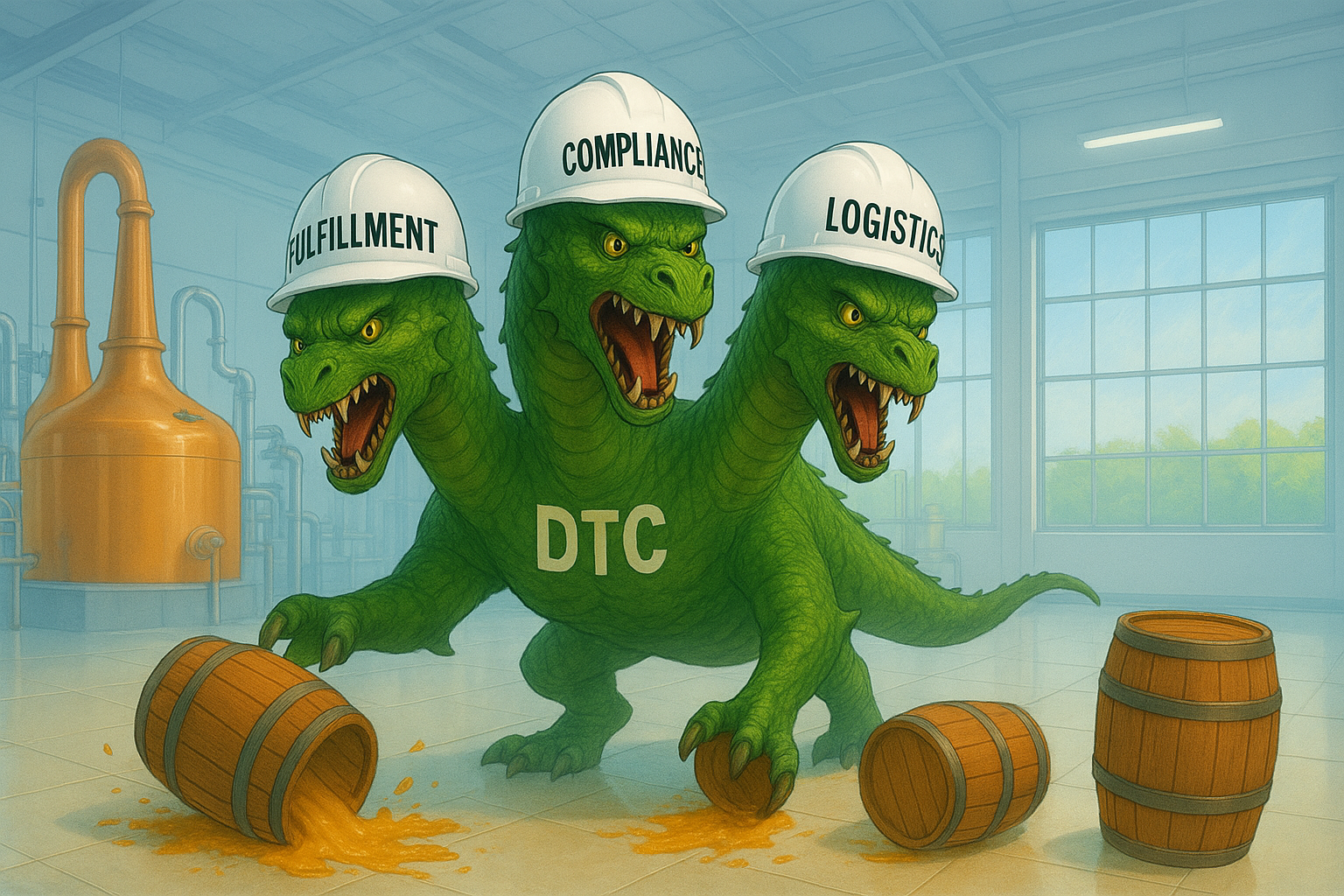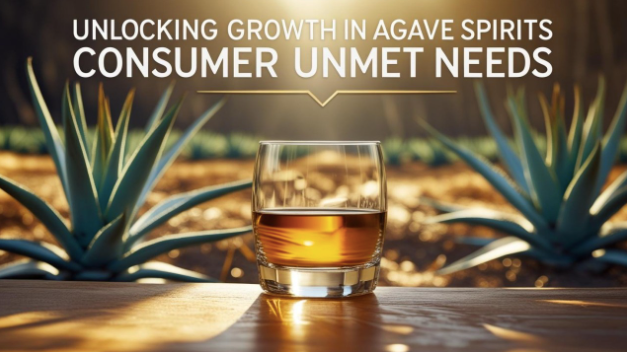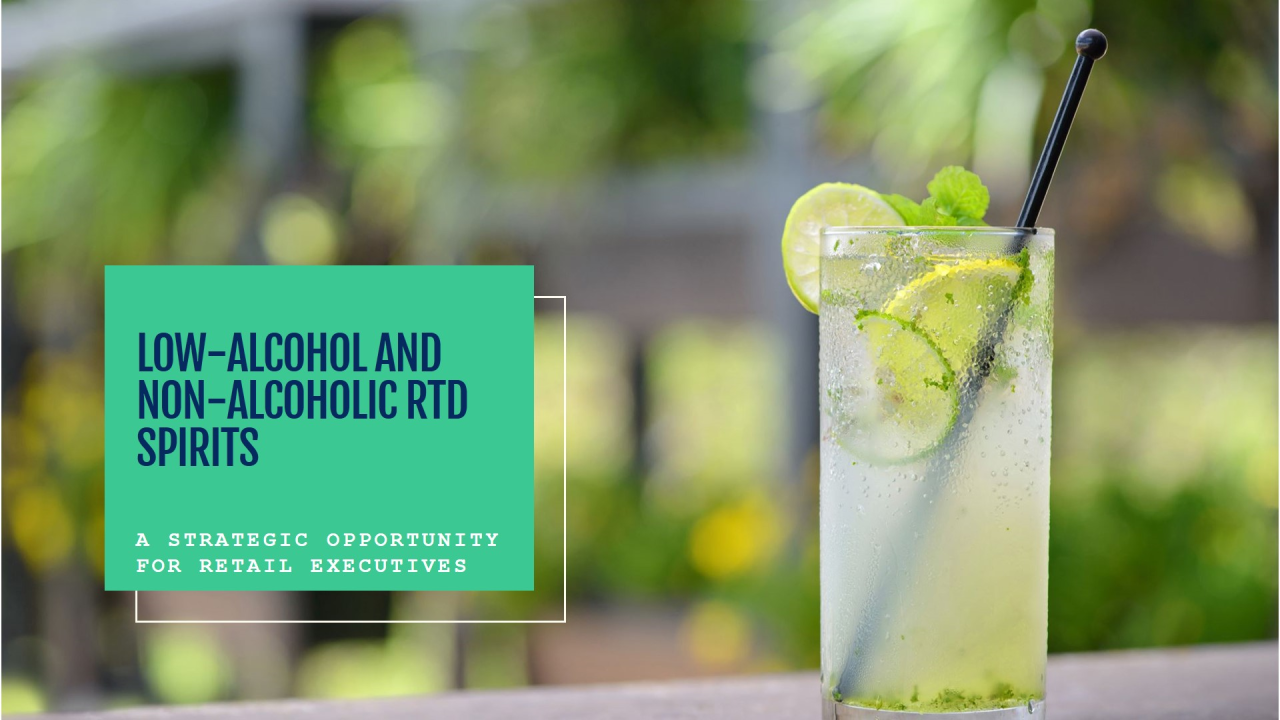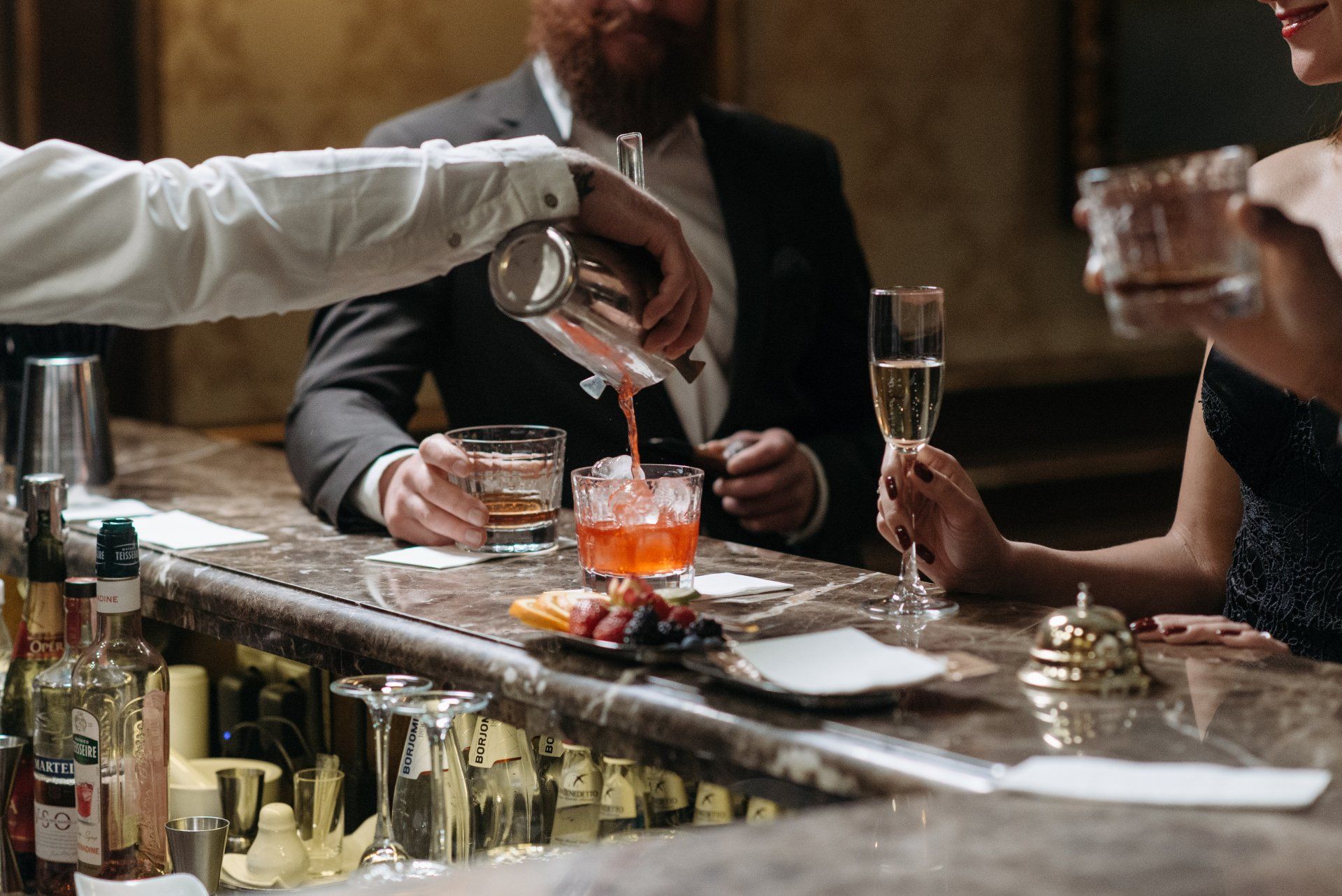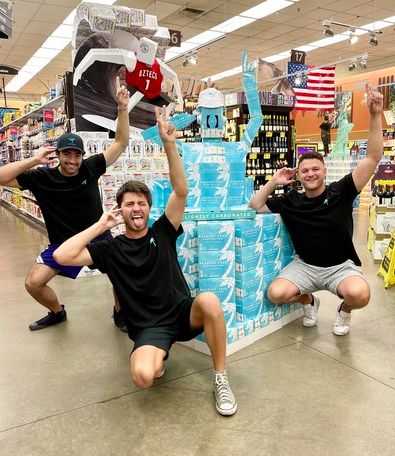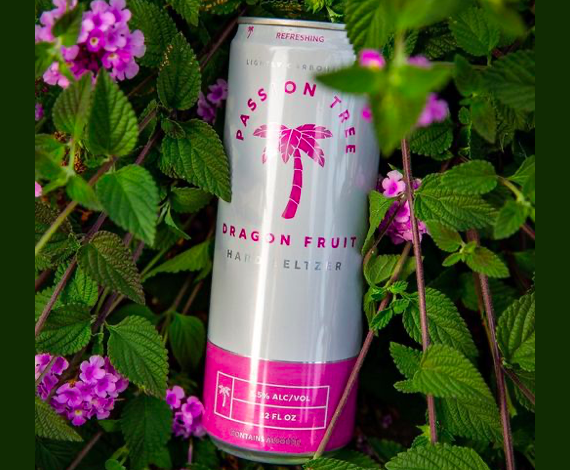Why Old-School Cocktail Practices Are Holding Your Bar Back (And How to Fix It)

🍸 Is Your Bar Stuck in the Past? 🍸
In the fast-paced world of Food & Beverage, Adult Beverage, and Hospitality, your cocktail program is a cornerstone of the customer experience. As industry leaders, you know that the quality of the drinks you serve can elevate—or break—the entire vibe of your establishment. But here’s the good news: we’re witnessing a shift from rigid traditions to more flexible, customer-centric practices. It’s time to pause, take a step back, and ask yourself: “Is this approach truly enhancing the guest experience, or are we just going through the motions because it’s always been done this way?”
In this article, we’ll explore outdated practices that might be holding your bar back and offer practical, innovative solutions to modernize your cocktail offerings while maintaining authenticity and quality. Ready to shake things up? Let’s dive in.
1. Personalization & Customization: Time to Break Free from One-Size-Fits-All Menus
The Issue:
Many bars still operate with a “standard cocktail menu,” which doesn’t take individual preferences, dietary restrictions, or even moods into account. Today’s customers expect more than just a one-size-fits-all approach.
The Reality:
We live in a world where customization is the norm—whether it’s picking your favorite coffee blend or curating your playlist. Guests now want that same level of flexibility with their drinks. This includes adjusting sweetness levels, offering spirit substitutions, and accommodating dietary needs (vegan-friendly, gluten-free, etc.).
How to Evolve:
Introduce a customizable cocktail menu, or better yet, offer a “build-your-own” drink option. Guests could choose from a variety of base spirits, mixers, garnishes, and flavors, creating a drink tailored to their preferences. Enhance this further with fun AI-driven recommendations or a bartender-guided experience, allowing customers to feel involved in their drink creation. Personalization isn’t just a trend—it’s the future of customer service.
2. High-Quality Non-Alcoholic & Low-ABV Options: The Rise of the Sober Curious
The Issue:
While non-alcoholic (NA) and low-ABV drinks are gaining popularity, many bars still offer basic mocktails or soda-based options that fail to meet the demand for sophisticated, flavorful alternatives.
The Reality:
More and more consumers are moderating their alcohol intake—whether for health reasons, personal preference, or social responsibility. These guests want more than watered-down mocktails; they’re looking for complex, flavorful drinks that still feel like a treat but without the alcohol.
How to Evolve:
Expand your NA and low-ABV offerings with creative ingredients, and don't forget to include NA or low-ABV beers and flavored seltzers that cater to both men and women. Consider infusing spices, herbs, and fresh juices to create complex, sophisticated options. Offering a well-curated NA cocktail menu not only meets growing demand but also positions your bar as forward-thinking and inclusive.
3. Speed & Convenience in Ordering: No One Wants to Wait for the Good Stuff
The Issue:
Long wait times at crowded bars can lead to frustrated customers—and lost sales. High-volume bars are particularly prone to delays, which is when service can make or break the experience.
The Reality: While customers appreciate a well-crafted cocktail, they also value efficiency—especially during peak hours. After all, no one wants to wait 20 minutes for a drink, no matter how good it is.
How to Evolve: Streamline the ordering process using mobile apps, QR codes, or digital menus that allow customers to place orders directly from their table. Pre-batching cocktails with the same high-quality ingredients as your signature drinks can also speed up service while maintaining flavor integrity. Efficiency is key, and it doesn’t have to come at the expense of quality.
4. Premiumization & Unique Ingredients: It’s About the Experience, Not the Price Tag
The Issue: While top-shelf spirits can elevate certain drinks, not every cocktail needs to be made with a rare, high-end ingredient. Sometimes, it’s the balance of flavors—not the price tag—that makes a drink memorable.
The Reality: Premium spirits have their place in luxury cocktails, but forcing them into every drink doesn’t always improve the experience. Many guests won’t notice—or even care—if their Margarita is made with $100 tequila versus a more reasonably priced one. The value of a cocktail comes from its balance, technique, and taste—not its price.
How to Evolve: Use premium spirits as an upsell option, but focus on offering great drinks made with carefully selected, high-quality mid-tier spirits. A balanced, well-crafted cocktail doesn’t need to be expensive to be impressive.
5. Over-Reliance on Classic Techniques: It’s About the Result, Not the Ritual
The Issue: Some bars are so focused on sticking to “classic” cocktail techniques that they overlook the most important part: the customer’s experience. Yes, shaking versus stirring matters—but if a guest asks for a shaken Martini, why make them feel like they’re breaking the rules?
The Reality: While technique is important, it’s the end result that counts. Your customers want a drink that tastes great and suits their preferences, not one that’s made with the “right” technique but doesn’t meet their taste.
How to Evolve: Be flexible with your methods. If a guest prefers their Martini shaken, let them have it. If they want their Old Fashioned in a coupe glass, why not? The key is delivering a drink that meets the customer’s expectations, not forcing them to conform to tradition.
6. Overly Complicated Menus: Less is More
The Issue: We've all seen cocktail menus that read like a list of ingredients for a science experiment: “A delicate blend of house-infused gentian root cordial with a whisper of saffron mist.” While these descriptions may impress fellow bartenders, they can confuse your guests and slow down the ordering process.
The Reality: Customers don’t need to be mixology experts to enjoy a cocktail. Complex descriptions may sound impressive, but they often overwhelm guests who just want to know what they’re drinking. Creativity is important, but clarity is essential.
How to Evolve: Simplify your menu descriptions. Aim for clear, approachable language that still reflects your creativity. Provide enough detail to intrigue without overwhelming. Your guests will appreciate a menu they can quickly navigate without needing a PhD in cocktail culture.
7. High-Concept Service That Slows Things Down: No One Wants to Wait for the Show
The Issue: Storytelling and theatrical presentations are fun, but when your guest has to wait 15 minutes for a cocktail because the bartender is too busy narrating the drink’s backstory, it’s time to rethink the approach.
The Reality: While immersive experiences can elevate a cocktail program, guests often value speed and efficiency—especially during busy periods. Slow service can frustrate customers, leading to lost sales and potential negative reviews.
How to Evolve: Find a balance between storytelling and efficiency. Save the dramatic presentations and long narratives for quieter times or special events. During high-volume hours, streamline service to maintain speed without sacrificing quality. Consider pre-batching some cocktails to keep things moving.
8. Not Offering Simple, Familiar Options: Don’t Forget the Classics
The Issue: Some bars dismiss basic cocktails, but sometimes your customers just want a simple, classic drink like a vodka soda or gin and tonic—not everyone is in the mood for a complex craft cocktail.
The Reality: Simple cocktails are often the backbone of a successful bar program. They’re approachable, familiar, and versatile. By offering a variety of options, you ensure that all guests feel welcome, regardless of their taste preferences.
How to Evolve: Keep a few well-crafted, classic cocktails on the menu. A solid vodka soda, gin and tonic, or Old Fashioned can go a long way in making sure everyone has a drink they can enjoy. A balanced menu ensures your bar appeals to a wide range of tastes.
Final Thoughts: Crafting the Future of Cocktail Bars
As trends in the Food & Beverage and Hospitality industries continue to evolve, the most successful bars will be those that adapt to changing customer preferences while maintaining the artistry and quality that define great mixology. It’s no longer just about perfecting cocktails—it’s about creating an experience that aligns with modern customer demands: personalization, efficiency, creativity, and inclusivity.
So, ask yourself: Are your bar practices enhancing the customer experience, or are you clinging to outdated traditions just because that’s how it’s always been done?
By embracing change and evolving to meet the demands of today’s drinkers, you can create a bar experience that’s as dynamic as the industry itself.
At the end of the day, it’s about giving your customers what they want: delicious drinks, an inviting atmosphere, and an experience that feels tailored just for them. Cheers to that! 🍸
Want to Learn More?
If you're looking to explore innovative trends in the adult beverage space or discover some of the best emerging brands in categories like low/non-ABV, healthy alternatives, sustainable sourcing, and more—contact us at FirstStepBeverage. We can help you evolve your beverage program and meet the needs of today’s savvy consumers.
Michael Halsey COO, First Step Beverage Co.
